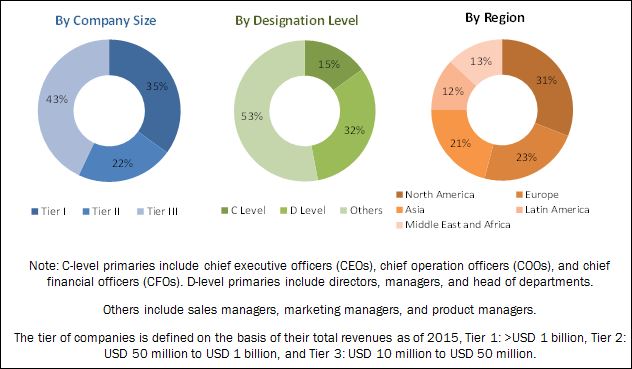The overall surface disinfectant market is projected to reach USD 789.1 million, at a CAGR of 8.3%.

According to the new market research report “Surface Disinfectant Market by Type (Quaternary Ammonium Compounds, Chlorhexidine Gluconate, Phenol, Alcohol, Aldehyde), Formulation (Liquid, Spray, Wipe), Application (In-house, Instrument), End User (Hospitals, Laboratories) – Global Forecast to 2022” “, published by MarketsandMarkets™,
Don’t miss out on business opportunities in Surface Disinfectant Market.
Surface disinfectant are used to prevent microbial cross-contamination and transmission of microbial infections through surfaces in hospitals, pathology labs, and other patient related areas. The in-house application segment accounted for the largest share of the market. The growth of this market segment is mainly driven by the need to reduce the rising incidence of HAIs.
Browse and in-depth TOC on “ Surface Disinfectant Market”
102 – Tables
34 – Figures
148 – Pages
Get Free 10% customization: https://www.marketsandmarkets.com/requestCustomizationNew.asp?id=231286043
Disinfectant applications in in-house, instrument disinfection, and other applications drive the growth of Surface Disinfectant market
In-house
In-house areas such as living environments and hospital wards, operation theatres, receptions, and clinics may harbor a wide range of germs and bacteria, which necessitates the need for effectively disinfecting bathrooms, walls, and furniture. Liquids and wipes are commonly used to clean and disinfect in-house surfaces. The growing incidence of HAIs is a key factor increasing the use of surface disinfectants in this application segment.
Instruments Disinfection
Instruments used in hospital care, such as endoscopes, catheters, and ventilators, can be a key cause of HAIs, and as such need to be effectively disinfected before use. Surface disinfectants used in this application segment can be either bactericidal, fungicidal, or viricidal. They are ready to use, non-toxic, and appropriate for surfaces like stainless steel, chrome, glass, plastic, and plexiglass. Formaldehyde, peracetic acid, and quaternary ammonium compounds are most commonly used for instrument disinfection.
The growth of this segment is driven by the increasing prevalence of HAIs and number of surgeries. According to U.S. Senate committee report, at least 250 patients were infected with antibiotic-resistant bacteria after undergoing endoscopic procedures between 2012 and 2015 in the U.S. This is a result of the use of contaminated devices.
Other Applications
Other applications include the disinfection of medical equipment such as gloves, stethoscopes, and blood pressure cuffs. In healthcare settings, the infection can be spread through these surfaces due to their frequent use. Surface disinfectants such as alcohols are commonly used to disinfect such medical equipment.
Inquiry Before Buying: https://www.marketsandmarkets.com/Enquiry_Before_BuyingNew.asp?id=231286043
Key players operating in the surface disinfectant market include 3M Company (U.S.), Cantel Medical Corporation (U.S.), Johnson & Johnson (U.S.), Procter and & Gamble (U.S.), Reckitt Benckiser Group plc. (U.K.), The Clorox Company (U.S.), and Sealed Air Corporation (U.S.).
